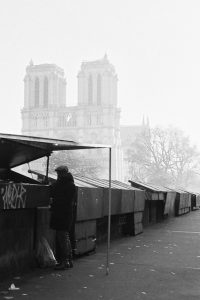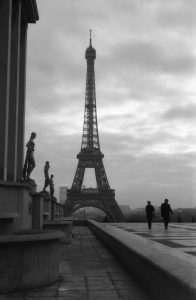In 1864 President Abraham Lincoln signed a Bill declaring the Yosemite Valley inviolable. Many agree that the reason this happened was the impossibly challenging expedition that Carleton Watkins made with his huge glass-plate camera to the valley in 1861.
It is agreed by most photography historians that the single most important reason for the protection of Yosemite, were the stunning photographs taken by Carleton Watkins and circulated in the House and Senate among congressmen and Senators, most of whom had never been west of the Mississippi. Lincoln himself never managed to get to California, hence never had a chance to personally see California, or visit the Yosemite Valley. But the photographs spoke.
I have just returned from the Memoria exhibition at the Maison Européenne de la Photographie in Paris. Two floors of James Nachtwey’s photographs, virtually all representing his 40 years of covering human conflict with his camera. So close-up it is nothing short of terrifying. When you see so much pain, so much hatred, and so much human suffering, you stand very quietly and think how time and time again mankind loses its humanity causing untold terror and irreparable damage. This exhibition is so intense that many at the exhibition today simply left half way through. Saying nothing. They just walked away in disbelief.
Almost 200 photographs hung in small groups, each covering a particular human tragedy. Each photographed impossibly close up. Some in colour, some in black and white. The overall impression leaves the viewer stunned and in awe at just how much humans can inflict on other humans, usually imposed by leaders who are just moving the chess pieces around the board without ever seeing the results of their decisions.
Which brings me to the point of this blog.
Learn from Carleton Watkins. Hang 200 photographs by James Nachtwey in the corridors of power around the world. In the Kremlin, in Washington, in Beijing…. Show the exhibition at the United Nations and at the European Union in Brussels. Perhaps we won’t get a resolution to end all war and conflict, but we can perhaps rethink our humanity and bring home in spades what decisions made by politicians, and leaders of armies do to common people and the soldiers sent to do their dirty business.
Like the photographs by Carleton Watkins contributed to the creation of great nature preserves, so James Nachtwey must be given the stage to create a new reality for politicians and global leaders. Let the photographs speak.
In case you are in Paris, the James Nachtwey exhibition is an absolute must. It is so painful that only by seeing it can you consider yourself a person of knowledge. Knowledge of hate, knowledge of fear, and maybe with some luck knowledge of what to do next time you have a choice to make a difference in your country.
Harbel





